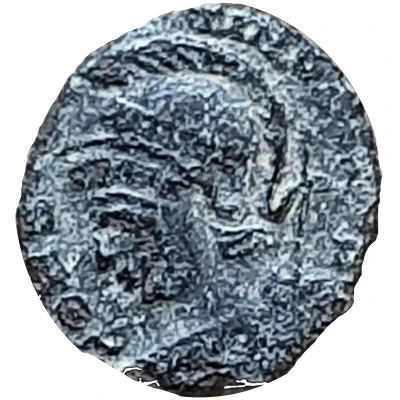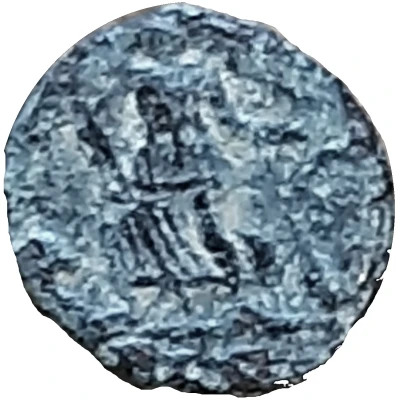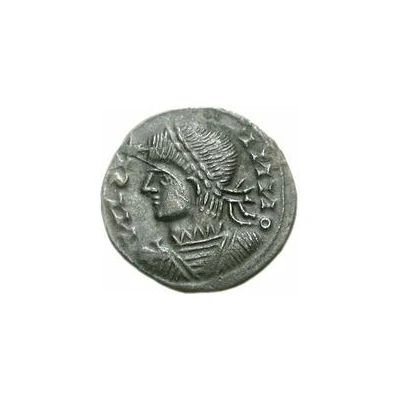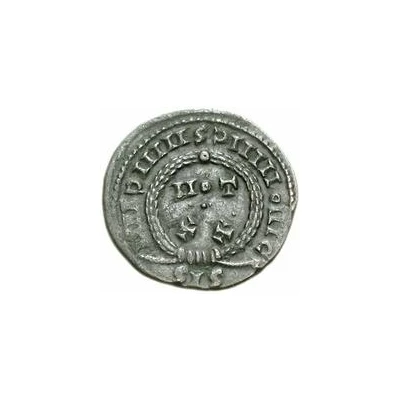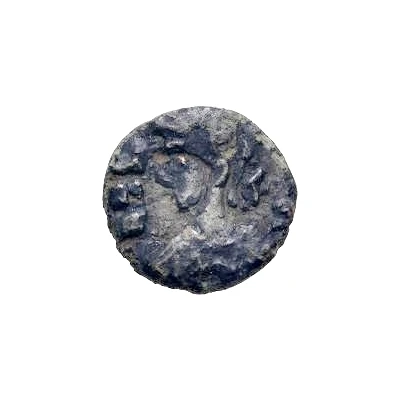
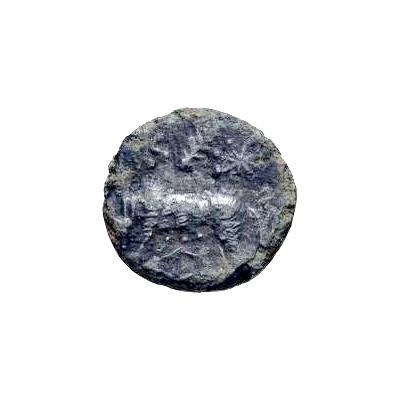

© Classical Numismatic Group, Inc.
Æ In the name of Rome under Constantine I
| Bronze | 0.83 g | 11 mm |
| Issuer | Uncertain Germanic tribes |
|---|---|
| Type | Circulating commemorative coin |
| Years | 330-375 |
| Currency | Solidus (circa 301-750) |
| Composition | Bronze |
| Weight | 0.83 g |
| Diameter | 11 mm |
| Shape | Round (irregular) |
| Technique | Hammered |
| Demonetized | Yes |
| Updated | 2024-10-04 |
| Numista | N#153944 |
|---|---|
| Rarity index | 100% |
Reverse
She-wolf standing while facing left with suckling twins below, all with legend below.
Lettering: [...]
Edge
Plain
Comment
This coin is said to be struck from the mid-4th to early-5th centuries. With the prototypes for these coins either struck in Lugdunum/Lyon mint or Treveri/Trier mint, and with those two types both being first struck in 530, that is the most-likely beginning date for this entire type of AE struck by an Uncertain Germanic tribe.The denominations of bronze coins that are unknown to numismatists are referred to as Æ (AE), followed by the coin's diameter. The Æ part simply means the coin is made of a base alloy, and because the diameter of these coins is never exactly as intended, different numbers can appear after the Æ for the same type.
The exact lettering of the surrounding legend may vary.
While the mintmarks for the examples imitating Lugdunum/Lyon mint and Treveri/Trier mint were both off flan, the pictures example is one from Treveri/Trier. The actual mintmarks may vary, but for the real coins from Treveri/Trier, the mintmark is TRP or TRS; for Lugdunum/Lyon, the mintmark is PLG or SLG. The mintmarks on these imitation pieces should be similar.
Interesting fact
One interesting fact about this coin is that it was created by the Uncertain Germanic tribes, who were a group of tribes that lived in the region of modern-day Germany and were known for their fierce warrior culture and skilled metalworking. Despite their cultural achievements, the Germanic tribes were not known for their coinage, and this coin is a rare example of their numismatic efforts. It is made of bronze, a common metal used for coins at the time, and weighs 0.83 grams, which is relatively light compared to other coins of the era. The coin's design features an image of Constantine I, who was the Roman Emperor at the time and was known for his military conquests and religious reforms. The fact that the coin was created in the name of Rome under Constantine I suggests that the Germanic tribes were under Roman rule at the time and were influenced by Roman culture and currency. Overall, this coin is a unique piece of history that provides insight into the cultural exchange and influence between ancient civilizations.
